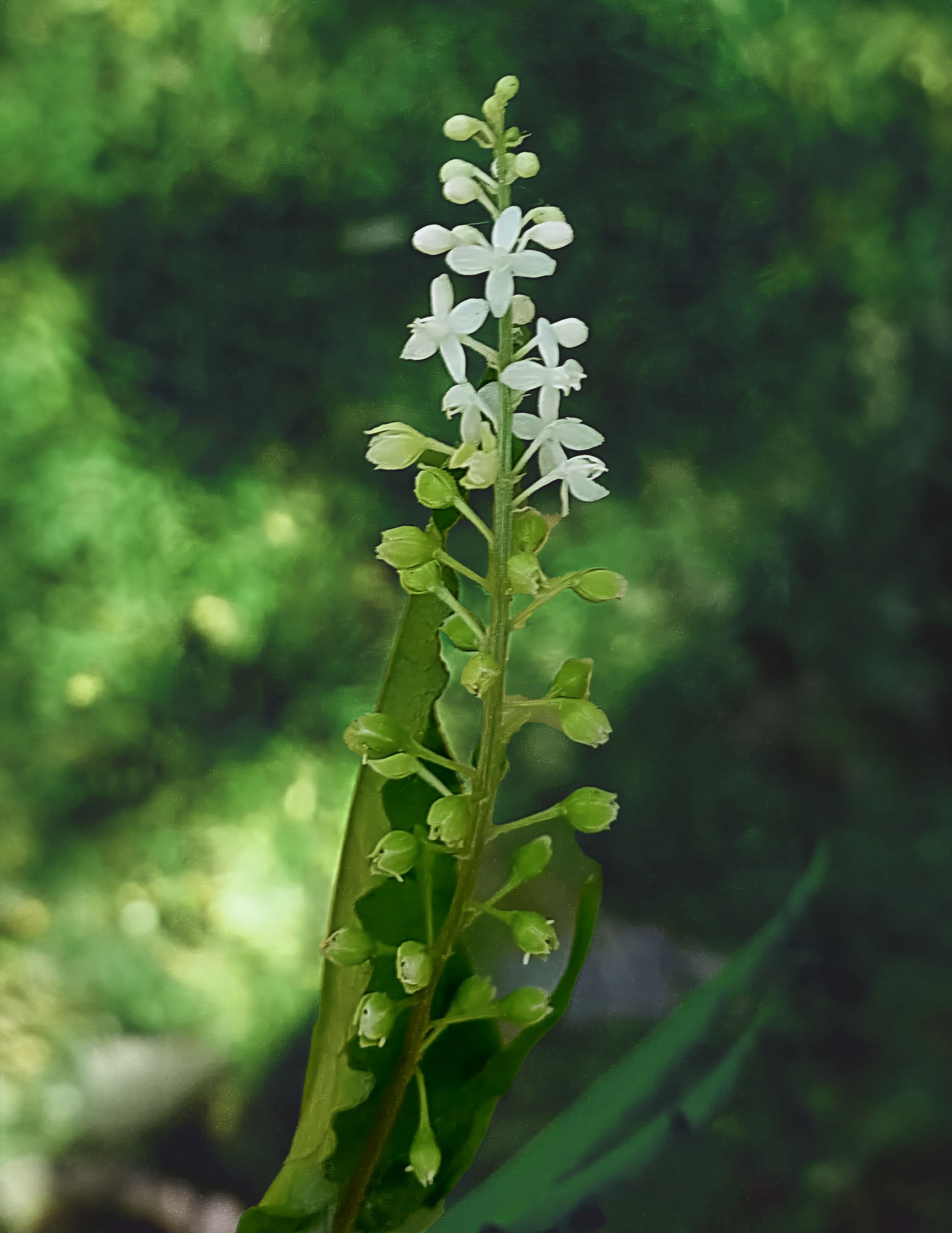Pigeonberry - Rivina humilis
Pigeonberry, Rivina humilis, is a charming, low-growing plant distinguished by its delicate sprays of small, white flowers that give way to vibrant, glossy red berries. The berries, while visually appealing, are not typically consumed. Historically, preparations from the plant were incorporated into traditional practices for their potential effects. In a garden setting, Pigeonberry serves as an excellent ground cover or edging plant, particularly in shaded or partially shaded areas. Its compact form and colorful berries add a touch of brightness to understory plantings and woodland gardens, creating a natural, understated beauty.
Sun Exposure: Partial, Shade
Soil Moisture: Medium
Bloom time: Summer
Height: 1-3ft
Wetland Status: FACU
No specific moths or butterflies are widely documented as primary hosts, but the berries attract birds, aiding in seed dispersal.
Pigeonberry, Rivina humilis, is a charming, low-growing plant distinguished by its delicate sprays of small, white flowers that give way to vibrant, glossy red berries. The berries, while visually appealing, are not typically consumed. Historically, preparations from the plant were incorporated into traditional practices for their potential effects. In a garden setting, Pigeonberry serves as an excellent ground cover or edging plant, particularly in shaded or partially shaded areas. Its compact form and colorful berries add a touch of brightness to understory plantings and woodland gardens, creating a natural, understated beauty.
Sun Exposure: Partial, Shade
Soil Moisture: Medium
Bloom time: Summer
Height: 1-3ft
Wetland Status: FACU
No specific moths or butterflies are widely documented as primary hosts, but the berries attract birds, aiding in seed dispersal.
Pigeonberry, Rivina humilis, is a charming, low-growing plant distinguished by its delicate sprays of small, white flowers that give way to vibrant, glossy red berries. The berries, while visually appealing, are not typically consumed. Historically, preparations from the plant were incorporated into traditional practices for their potential effects. In a garden setting, Pigeonberry serves as an excellent ground cover or edging plant, particularly in shaded or partially shaded areas. Its compact form and colorful berries add a touch of brightness to understory plantings and woodland gardens, creating a natural, understated beauty.
Sun Exposure: Partial, Shade
Soil Moisture: Medium
Bloom time: Summer
Height: 1-3ft
Wetland Status: FACU
No specific moths or butterflies are widely documented as primary hosts, but the berries attract birds, aiding in seed dispersal.


















